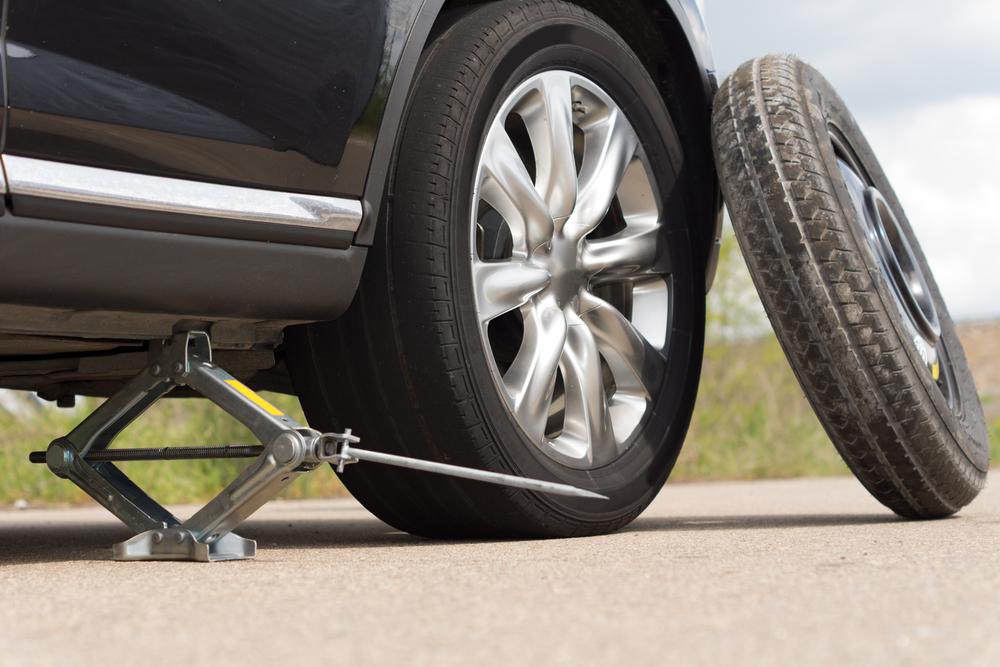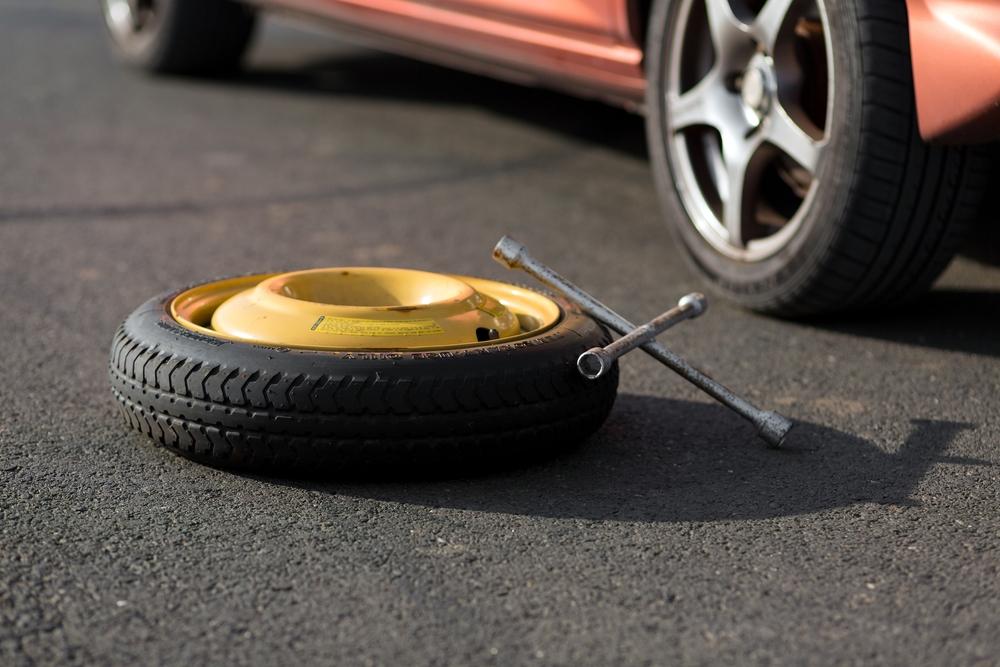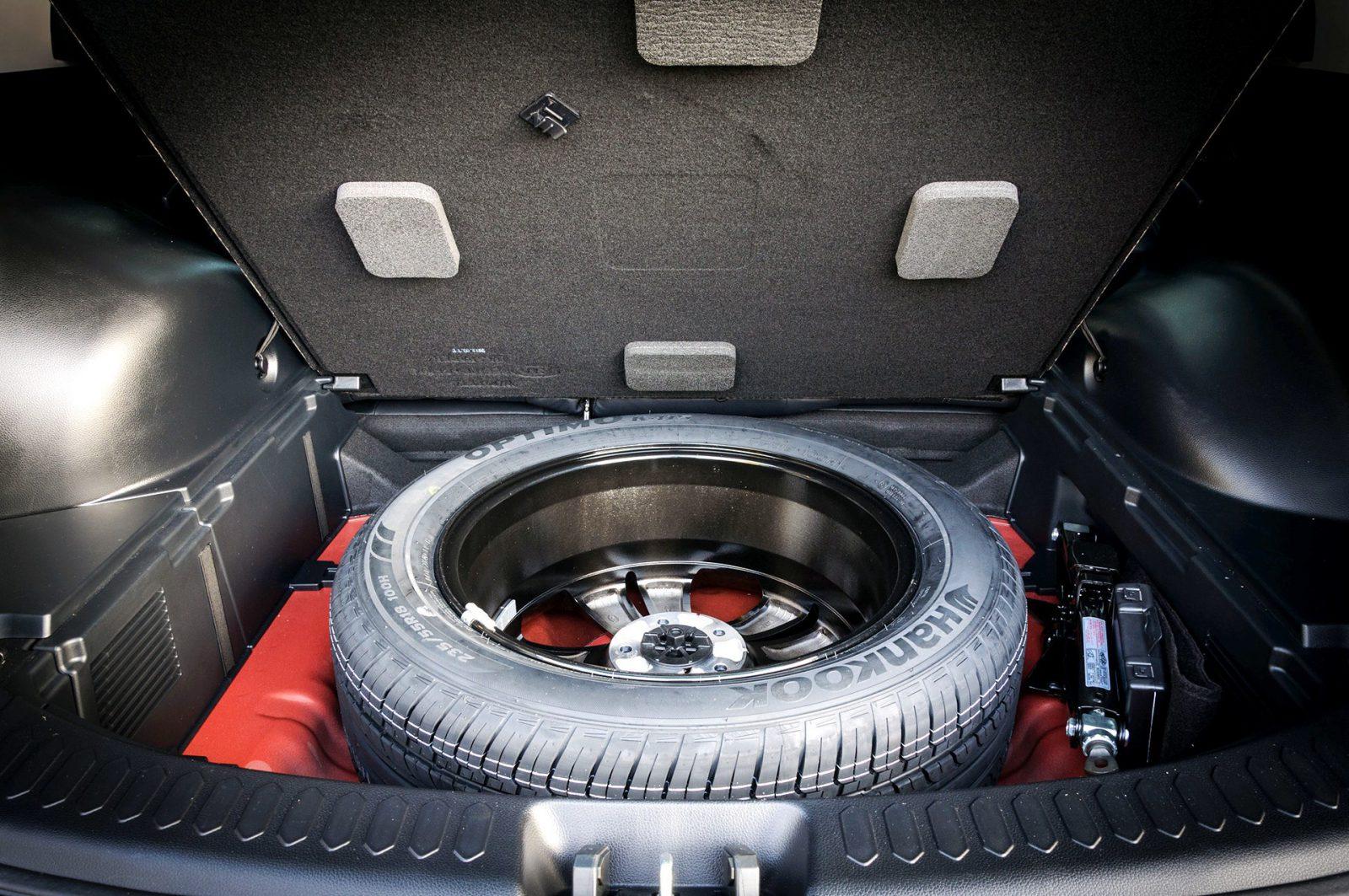Spare tires are a lifesaver when one of your regular tires pops in the middle of a highway or you may just find the car with a deflated tire. But, how long can you drive on a spare tire?
The most common advice would be to check the owner’s manual. But, most people don’t even bother to turn the pages. Check this guide if you are one of them.
Contents
The Importance of Spare Tire on Your Car
The spare tire is always the “savior” in emergencies on the road. It is usually stored in the rear luggage compartment or outside the vehicle, in case the main tire has a problem while driving on the road.
Depending on the manufacturer and model of the vehicle, there will be 2 different types of spare tires: A tire of the same size as the main tire (spare tire) and a temporary tire that has a smaller size than the main tire (donut tire).
- Using a spare tire does not change the car’s performance and ability to handle situations. The process of braking, moving, or steering is as smooth as the main tire.
- Donut tire is a temporary spare tire so it is recommended to only use within a range of less than 80km and at speeds less than 80km/h.
How Long Can You Drive on a Spare Tire?
There is no definite answer to this question because it depends on several factors. It happens mainly because modern vehicles come with a donut tire, which is smaller than a full-size tire.
The logic behind it is that people need it on rare occasions and don’t even use it for a long time. Also, a smaller tire saves space in the trunk.

So, how long can you drive on a spare tire? Considering various scenarios, they can last for different periods:
1. A full-size spare
If the spare is a full-size tire, given that it is the same size and type as the ones in your vehicle, you can drive it like a regular tire and use it until it wears out. You may think that the spare tire will be like a new one if you don’t use it. This is not true.
If it has been in your trunk for more than 5 years, you should check it thoroughly for cracks, holes, and pressure before attaching it to the wheels.
Many pickups and SUVs carry spare tires under or back of them. Keeping them out in the open increases the chance of damage by road debris and UV rays. In that case, inspecting them once in a month should be a regular procedure.
>> Advice: You should install the best tire pressure monitoring system to avoid spare tire situation!
2. Donut spare
If the spare tire is smaller in size (a donut tire), you should drive it only the distance required to cross to take the car to a service shop as you should do it as soon as possible. Some of these tires also have a maximum mileage and speed rating. Check the tire’s sidewalls for these max limits and replace it with a full-size one before crossing them.
A donut is an elementary tire that the manufacturers produce to save space and cost. It is undersized, is built around a basic steel rim, and has very little tread. They are vulnerable and highly susceptible to all types of damage.

3. A run-flat spare
This type is rising in popularity as the manufacturers see it as a solution between the costly full-size tires and the rudimentary donut tires. You will find them with the recent models of MINI and BMW.
These are tough, built to endure most road hazards, and can go on nearly 50 miles even after a puncture. However, they are costlier than a traditional full-size tire.
Bonus: How to take care of your spare tire? Check out the video to see more details
So, how long can you drive on a spare tire? As you can see, there is no one-line answer. You have to take the decision based on its type, age, and its storage conditions.
Why You Shouldn’t Drive With A Spare Tire For A Long Distance?
Many people need to drive long journeys and have a flat tire so they have to use a spare tire instead.
However, instead of using the spare tire as a lifesaver, many drivers use this type of tire to drive longer distances than the manufacturer’s recommendation (about 50-70 miles). So why do manufacturers advise you not to use the spare tire longer than recommended?
Low loading capacity
Spare tires also have less load-carrying capacity. Long-term use of the spare tire can cause a serious mechanical problem; the smaller diameter tire puts more pressure on the differential.
Limited speed and distance
Spare tires or donut tires are intended for short-term use only. They are designed to be smaller and lighter than regular tires, which means they have lower speed and distance ratings.
Most spare tires are limited to a maximum speed of around 50-55 mph (80-90 km/h) and a distance of about 50-70 miles (80-110 km). Exceeding these limits can result in tire failure, loss of control, or even accidents.
Reducing traction and handling
The spare tire is narrower and has a smaller road contact area. This reduces traction, increases braking distances, and potentially unpredictable handling in an emergency.
The reduced grip can increase the risk of skidding or losing control of the vehicle, particularly during emergency maneuvers or sudden braking. It also means that ABS and anti-slip controls are not effective in getting you out of danger.
Suspension and handling imbalance
Using a spare tire for an extended period can create an imbalance in the vehicle’s suspension and handling characteristics. The spare tire may have different inflation pressure or be of a different type than the other tires, leading to uneven weight distribution.
This can negatively impact the vehicle’s stability and handling, potentially causing issues with steering and cornering.



